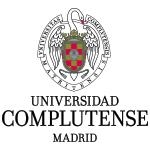Tracking trouble: sources, persistence, and risk factors of antimicrobial-resistant Escherichia spp in freshwater fish farms of north-west France
Conference in Seminarios VISAVET 2025
October 24th, 2025
Navarro-Gonzalez N.
|
|
Antimicrobial resistance (AMR) poses a growing threat to human and animal health, and its spread in the environment is increasingly being reported. As it depends on surface water, fish farming is particularly exposed to fecal pollution from wastewater effluents and agricultural runoff, despite regulations. Resistant bacteria can enter fish farms through multiple routes, including polluted water, where they can persist and interact with aquatic bacteria. This study aimed at identifying sources of antimicrobial-resistant Escherichia coli in freshwater fish farms located in France, and at assessing their persistence.
Four farms were recruited for this longitudinal, observational study: two recirculating aquaculture systems (Farm A & B) and two flow-through systems (Farm C & D). For each system type, one farm was located downstream from a wastewater treatment plant (Farm B & D), offering a high-risk scenario for AMR exposure. We sampled both external sources (water and feed) and potential reservoirs inside the farm environment (sediment and biofilm). Samples were collected seasonally, at a minimum of nine points per farm, following a systematic approach (n=452). Escherichia isolates were identified using MALDI-TOF mass spectrometry, and all confirmed isolates (244) were tested for antimicrobial susceptibility by broth microdilution against a panel of 15 antibiotics. Complementary surveys gathered data on farm management practices, biosecurity, local antibiotic use, and surrounding land use.
Escherichia coli and E. marmotae were most frequently detected in water (83.4%) and biofilm (84.7%), while their presence was lower in sediment (25%) and rare in feed (3.3%). Farms downstream from WWTP were at higher risk of harboring Escherichia, but we did not detect a seasonal effect (probably because those years were very rainy). Epidemiological resistance was detected against all antibiotics tested, including important antibiotics such as ciprofloxacin (16/244), cefotaxime (13/244), meropenem (2/244), and amikacin (1/244), among others. Fall was the season with the highest likelihood of detecting resistant Escherichia (OR=2.4). Other significant factors were: disease being reported in the last 3 months in the farm (OR=1.8) and wild birds being reported (OR=3.3). Whereas sediment does not seem a reservoir of Escherichia in this farm environment, Escherichia isolated from sediment were more likely to be resistant (OR=13.2). With regards to multi-drug resistance, water was the main vehicle (OR=4.7). Opposite to this, Escherichia can form a biofilm in this farm environment, but they do not seem to cumulate resistance traits (OR for multi-drug resistance=0.05). Interestingly, in those events where the water temperature exceeded 14 °C, the probability of isolating multidrug-resistant Escherichia was higher (OR=3.5). In Farm D, we observed a recurring resistance pattern across two consecutive sampling periods (spring and summer), suggesting the persistence or local spread of specific resistant clones. Sequencing these isolates will shed light on their relatedness.
|
|
|
| Ecole Nationale Vétérinaire, Agroalimentaire et de l´alimentation de Nantes (Oniris). | |
| Centre INRAE Val-de-Loire. | |
 | Centro de Vigilancia Sanitaria Veterinaria (VISAVET). Universidad Complutense (UCM). |
Link to Seminars VISAVET 2025

